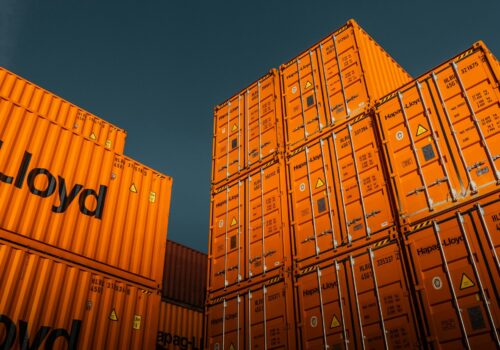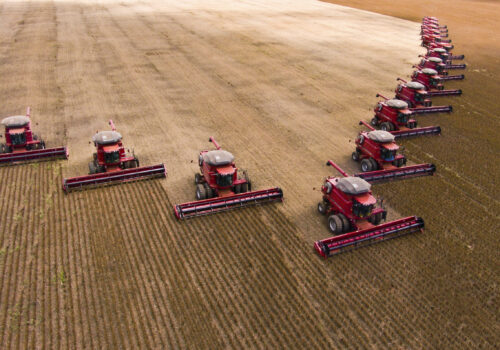How to improve Latin America’s agri-food security in a changing world
Trade, innovation, and the exchange of people and ideas are fundamental components of today’s global food security system. The Organization for Economic Co-operation and Development (OECD) has observed that a fifth of all calories that are consumed in the world cross at least one border. The agriculturally rich Western Hemisphere plays a critical role in this global system. The United States, Brazil, Canada, Mexico, and Argentina are among the world’s largest staple crop producers and exporters. Brazil and the United States, for example, rank first or second globally in exports by volume of corn, soybeans, and rice, while Canada is the world’s fourth largest wheat exporter. Other countries in the Americas are important producers of coffee, sugarcane, bananas, and other fruits and vegetables. Five of the world’s top ten banana exporters, for example, are in South and Central America, as are three of the world’s top five coffee exporters.
However, the uninterrupted flow of trade in the food and agriculture that feeds humanity is not guaranteed. The hemisphere’s leaders must think strategically and identify opportunities to strengthen the region’s agri-food architecture.
The Scowcroft Center for Strategy and Security’s Food Security: Strategic Alignment in the Americas project, conducted in partnership with The Mosaic Company, assesses the Western Hemisphere’s food security in a changing strategic landscape. The project draws upon perspectives from across the Americas to understand the challenges and opportunities facing regional and global agri-food systems.
On April 10, the Scowcroft Center’s GeoStrategy Initiative hosted the project’s first private roundtable, bringing together dozens of leading experts from across the Americas from an array of research institutions, universities, the agri-food industry, government, and multilateral institutions. The discussion focused on food security in Latin America, highlighting the importance of trade, geopolitics, climate change, innovation, and investment trends.
A season of change
The Americas are navigating novel geopolitical and geoeconomic conditions, with uncertainties introduced by proposed new tariffs that the United States has placed (and might yet place) on its hemispheric neighbors. A significant concern involves the impact that such tariffs could have on established agri-food trade relationships across the hemisphere. Should the United States, Canada, or Mexico implement high tariffs on agri-food products, one potential consequence could be large reductions in the levels of agri-food trade around the globe and in the Americas. At the same time, some South and Central American countries might benefit from enhanced exports to one or more of those three countries.
There are just as many, if not more, opportunities throughout the region to enhance food security. Intraregional trade in agri-food products—including processed goods such as cereals, food residues, meats, fats and oils, food preparations, oilseeds, beverages, and dairy products—provides a significant opportunity for enhanced cooperation in the Americas. Studies by the Food and Agriculture Organization and the Inter-American Development Bank have projected that Latin America’s intraregional agricultural market has room to expand; they identified some sixty-seven agri-food products with potential for growth in the future, forecasting market growth of some $3 billion (from $21.6 billion to $24.7 billion). Latin America’s subregions have substantial capacity to expand agri-food exchange with one another, thereby improving competitiveness in global markets. For example, while 60 percent of South America’s food imports come from intraregional trade in Latin American and Caribbean markets, in Mexico and Central America, that figure is only 20 percent.
Policymakers in Latin America should facilitate intraregional trade through regional trade agreements that, among other things, dismantle the complex set of rules currently hindering integration. Greater investment in ports, rail, and roads can create more physical connectivity. And digital connectivity, which can ease exchanges of all types, such as trade logistics, should be enhanced as well. As food security will depend on the increase of crop productivity in the coming years, there are opportunities to deepen intraregional partnerships on agri-food sciences, which will support sustainable production growth in these countries.
A changing climate
Roundtable participants also stressed how the changing climate will impact agriculture in Latin America. The planet’s ongoing warming (above 1.5 degrees Celsius compared with pre-industrial levels) poses serious challenges to Latin American agriculture. Strategies to overcome climate impacts should include a focus on both adaptation and mitigation to ensure that the region’s agriculture remains viable. Policymakers should focus attention on how to make smallholder farmers more resilient given the disproportionately harsh climate impacts they face. One strategy is to provide low-interest loans and access to training and other services to smallholder farmers. Such actions can increase access to land, fertilizers, seeds, and tools while boosting incentives to implement innovative agriculture technology, ultimately increasing yields and market access.
Roundtable participants also observed that on- and off-farm innovation plays an important role in shaping Latin America’s agri-food sector, stressing the criticality of emerging technologies in a more sustainable and resilient food system. The central challenge, they asserted, involves crafting the strategies needed to finance and successfully scale new systems given their expense. Improvements in data collection and analysis enhance understanding of how climate change is contributing to pest outbreaks and crop diseases. Alternative chemical processes for creating fertilizers and seed certification programs might improve soil and plant resiliency. The adoption of low-carbon agriculture models, backed with government support within streamlined and science-based regulatory processes, could further align agricultural policy with climate adaptation and mitigation objectives.
These reforms are needed in part because Latin America continues to face problems related to food insecurity. While the region has seen declining hunger and food insecurity in recent years, in part due to investments in social protection systems, 41 million people across the region were still affected by hunger last year. Even in major food-producing countries such as Brazil and Argentina, which dominate South American production and exports of soybeans, wheat, corn, and rice, lower-income populations continue to struggle to gain access to sufficient amounts of healthy food.
To overcome food insecurity while ensuring that Latin America’s agri-food systems are resilient and interconnected, the region’s farmers, farming associations, agri-food firms and processors, supply distributors, and policymakers must cooperate with new, innovative strategies. Agri-food frameworks that are predictable, transparent, and based on rules and science will help cement the region as economically diversified, climate adaptive, and innovative. The Americas must take advantage of its strengths in the agri-food space for preeminence on the global stage.
Ginger Matchett is a program assistant with the GeoStrategy Initiative in the Atlantic Council’s Scowcroft Center for Strategy and Security.
Peter Engelke is a senior fellow with the Atlantic Council’s Scowcroft Center for Strategy and Security as well as a senior fellow with its Global Energy Center.
Further reading
Thu, May 29, 2025
Why Latin America and the Caribbean matter for OECD countries
Report By Jason Marczak, Martin Cassinelli
Latin America and the Caribbean are increasingly vital partners for OECD countries, offering critical minerals, food security, and clean energy assets. With democratic institutions, open markets, and active multilateral engagement, the region supports global resilience. Strengthened OECD–LAC cooperation can advance shared goals in economic security amid shifting global dynamics.
Fri, May 9, 2025
Economic pulse of the Americas: Latin America and the Caribbean outperforms in imports of US goods
Infographic By
This infographic highlights LAC’s unique role as a high-value market for US products. With strong trade ties and deep supply-chain integration, the region could help the United States advance its economic goals.
Mon, Sep 9, 2024
Brazil 2050: A vision for global food security
Issue Brief By Valentina Sader, Peter Engelke
How can the world meet the growing demand for food while also adapting to climate change?
Image: Machines lined up before harvesting soybeans at a farm in Tangara da Serra in Cuiaba March 27, 2012. U.S. soybean futures fell from a six-month high on Tuesday as traders booked profits ahead of highly anticipated crop reports due at the end of the week. REUTERS/Paulo Whitaker



